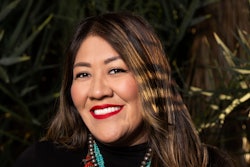 African American Art Front
African American Art Front
and Center
Three years ago we featured Paul R. Jones, following his decision to donate his extensive collection of African American art to the University of Delaware (see Black Issues, March 29, 2001). And three years later, the University of Delaware has completed a $4.6 million renovation of a campus building to house the elaborate collection. The inaugural exhibition is entitled “A Century of African American Art: The Paul R. Jones Collection,” which runs through June 2005.
In addition, the Orlando Magic’s Grant Hill is also making a name for himself in the art world. Although sidelined with injuries for the past few seasons, he has not been just idling on the bench, but amassing an impressive collection of African American art. Hill, now back playing with his team this season, has put his collection of paintings, sculptures and prints in an exhibit titled “Something All Our Own” on the road to share with others. Some might consider an NBA superstar to be an unlikely art connoisseur, but Hill, a product of a well-educated family who grew up in the suburbs of Northern Virginia, has never fit the stereotypical image of a professional athlete.
Both collections are exhibiting at university art museums, making them widely available and open to the public. Hill and Jones seek to use their art collections for educational purposes, as well as to showcase Black artists who “haven’t had the recognition they deserve,” Hill says.
The Grant Hill and Paul Jones’ collections will be exhibiting at both historically Black college museums and non-HBCU museums. For some, the fact that Jones donated his valuable collection to a non-Black school may be a point of contention. However, Jones has explained that the University of Delaware was the institution most willing to meet conditions he felt would enhance the exposure of the collection.
As African American art has become more popular over the years, Black artists and historians are quick to note that there was a time when it was only Black colleges that actively purchased and displayed works by Black artists, but not so any more.
In “Erasing an Absence,” senior writer Ronald Roach revisits the Paul R. Jones collection during a trip to Delaware. And assistant editor Crystal L. Keels in “Something All His Own,” shares her experience while viewing the Grant Hill collection at Morgan State University in Baltimore.
Lastly, assistant editor Kendra Hamilton ventured to Washington, D.C., to check out the National Museum of the American Indian, which opened to much fanfare in September. Much has been written about the museum — some writers praising its unique architecture, others critiquing how the museum has chosen to tell the story of the American Indian. Many agree that the museum clearly reflects how American Indians want their story to be told, not devoting much space, for example, to their treatment by the United States or historical misrepresentations portrayed through the mass media. Kendra notes that the museum, however, is a step up from natural history museums’ traditional American Indian exhibits featuring “dusty mannequins wearing moldering loincloths.”
Regardless of what the critics say or think, what’s important is that the American Indian community feels that the newest, and possibly the last museum constructed on the National Mall, accurately tells their story and is something all their own.
Hilary Hurd Anyaso
Editor
© Copyright 2005 by DiverseEducation.com















